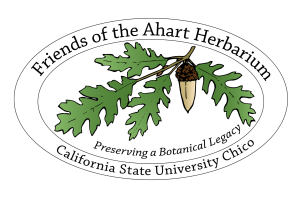Riparian Ecology along the Middle Sacramento River:
Understanding Riparian Ecology from the Perspective of Flowing Water
May 8, 2019, 9:00 am–4:00 pm
Location: West of Chico, south of Hamilton City
Registration Information
Physical river processes drive riparian ecology. Flooding and flowing water determine how sediment will be moved through the watershed and how it is distributed across the floodplain, with riparian vegetation responding to the different growing conditions provided by the sediment patterns. Flow velocity shapes the plants as they grow and creates the characteristic vegetation structures that we associate with riparian areas.
The high flows in the Sacramento River during January and February 2019 will result in clear demonstrations of sediment deposition and erosion. The effects of hydraulic forces upon the vegetation should be evident. Recent (2017–18) levee removal at Pine Creek should be an interesting examination as to how river flows have changed the floodplain in this area.
This field-based workshop will examine riparian ecology along the middle Sacramento River from the perspective of flowing river water: How has flowing water determined the location of plant species across the floodplain; How has the flowing water shaped the physical structure of the vegetation. This year’s river flooding should give us a lot to explore and to discover about the riparian ecology of the middle Sacramento River.
The structure of riparian vegetation is important because:
1. The structure and composition of riparian vegetation supports local wildlife populations. Wildlife species have precise and predictable requirements for vegetation structure for cover, nesting habitat, and foraging habitat. We will discuss how river processes ultimately determine riparian wildlife assemblages, and focus on how local wildlife species are utilizing the field trip site.
2. The structure of riparian vegetation can greatly affect river/flood flows through directing flows and slowing velocity. These influences are important for flood management within the flood system of the Central Valley as managed by California Department of Water Resources. How the modern vegetation structure affects flows locally will be examined.
Thus, we will attempt to understand how river flows both created the conditions for the development of a given vegetation structure, AND how does today’s structure affect today’s flows.
Approach: The workshop will take place at two different field locations along the middle Sacramento River. We will hike across floodplains and along river banks and onto in-channel sandbars. We will examine how the hydraulics of river flows have formed the sediment and vegetation patterns across the floodplain. Participants will be expected to excavate shallow holes or pits to determine stratification of sediment profiles under and near selected plants and geomorphic surfaces (small shovels and soil auger will be provided).
Construction of the Hamilton City Levee Flood Damage Reduction & Ecosystem Restoration Project began in 2017. It involved the removal of an older levee that greatly expanded the area of the floodplain in this reach. Responses of the vegetation, the soil surface and river banks to the hydraulic changes both upstream and down-stream should be informative. In addition, riparian vegetation restoration has been installed over the expanded floodplain. We will be visiting at the beginning of its second growing season since planting.
Workshop participants should expect being outside during this early summer field trip. Wearing long sleeves and long pants, a sun-hat, and sturdy hiking shoes should be appropriate (level terrain with hummocky micro-topography and spiney invasive weeds. Mosquitoes and ticks will be present. Bring plenty of water and lunch.
By the end of the workshop Participants will understand:
1. Sediment size classes and how they are distributed across the flood plain.
2. All riparian plant species, both native and invasive, will be identified.
3. How individual wildlife species utilize vegetation structure
4. The importance of vegetation structure as it affects and directs flood flows across the floodplain.
Instructors:
Dr. Tom Griggs. Senior Restoration Ecologist (retired) River Partners. Tom is a practicing restoration ecologist with a long history of designing and implementing restoration projects in the Central Valley of California, recently retired from River Partners.
Michael Rogner, Senior Restoration Biologist, River Partners. Michael has over 15 years experience designing, implementing and monitoring riparian restoration projects along the Sacramento and Feather rivers.
Stefan Lorenzato, Retired, Chief Riverine Ecosystem Section, DWR-IRWM, California Department of Water Resources. Stefan has worked with watershed management programs for over 30 years in various capacities.
This workshop has been approved for 2 Professional Development Credit by the California Consulting Botanist Board of Certification

